Memory cards are meant to save and store data for digitally captured files using flash memory. With the help of these memory cards, you will have the option to save extra data so that you don’t lose any information or data once that is turned off. Memory cards have a very tiny physical size, which makes them portable. A lot of users use memory cards to save, transfer, and back up data and expand storage space.
CFast and CF cards are two of the most prominent types of cards available in the market. They follow the latest standards for memory cards. It is advisable that you choose between CF and CFast cards accordingly, depending on your preference. This blog explores the difference between CF vs CFast cards so that you can make the right choice for your professional needs.
Try Wondershare Recoverit to Perform CF Card Data Recovery

In this article
What Is a CF Card?
In 1994, SanDisk established the CF card or Compact Flash card. It uses flash memory technology to store the devices on a tiny portable device. The CF card doesn’t have any moving parts or mechanical parts that are responsible for storing the data. These days, CF cards are used for video cameras and DSLR cameras.
The first CF card was designed using NOR flash memory technology. This allowed the programs to be executed without copying the system data into the RAM. However, NOR had issues with storing large amounts of data, which is why NAND replaced it. The coming of NAND ensured that the devices were able to store vast amounts of data. Eventually, NAND became the staple and go-to flash memory technology for all removable memory cards like CF cards and CFast cards.
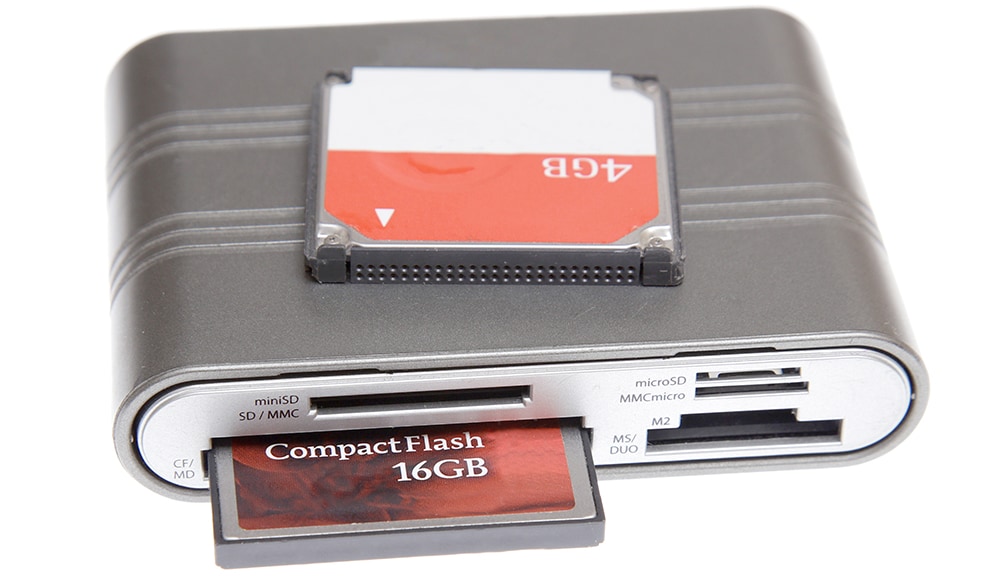
What Is a CFast Card?
A CFast card refers to the type of memory card that is used for video recording saving and imaging purposes. Professionals use these as it is a new generation of flashcards that combines a different form factor from CompactFlash card and SATA interface. The use of CFast cards plays an important role in ensuring high storage capabilities for fast data transfers.
CFast Card combines Serial ATA (SATA) interface with CompactFlash (CF) cards for a single product. This is a convenient option for videographers and photographers who need professionalism to determine reliability and ensure a better performance. Therefore, CFast cards are used for digital cameras and high-end DSLRs as they support high transfer speed for burst mode photography and high-resolution video recording. You must understand the CFast vs CFexpress comparison to make the right choice.
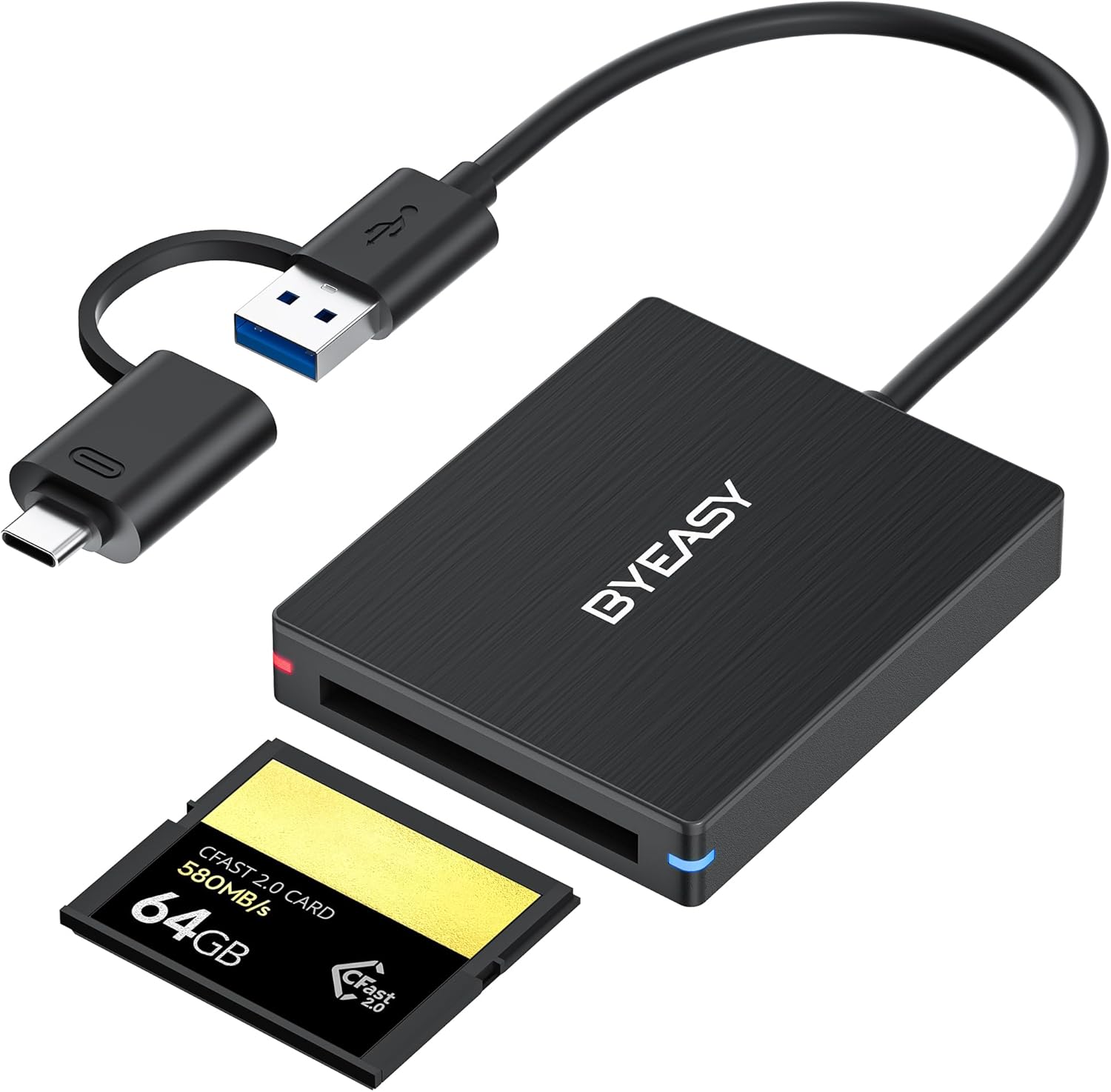
CFast vs. CF Card
In the table below, the difference between CF vs CFast is highlighted.
| Parameter | CF Card | CFast Card |
| Dimension | 42.8 × 36.4 × 3.3 mm | 42.8 × 36.4 × 3.3 mm (identical to CF cards) |
| Speed | Up to 167 MB/s (UDMA 7 interface) | Up to 600 MB/s (SATA III interface) |
| Capacity | Typically up to 512 GB | Up to 2 TB |
| File System | FAT32, exFAT | exFAT |
| Types | Type I (3.3 mm thick), Type II (5 mm thick) | Single type with a SATA III interface |
| Uses | DSLR cameras, industrial devices, legacy devices | High-end cameras, video recorders, cinema gear |
| Working | Uses Parallel ATA (PATA) interface | Uses Serial ATA (SATA) interface |
How to Read a CF Card?
If you are not aware of how CFast vs Compact Flash cards work, the numbers and words on them won't make any sense to you. Usually, an easy way to read a CF card is to first look at the brand name. Although the brand name isn't the most important component, it does serve a crucial purpose. This is mostly because some people have loyalties towards a particular brand, ensuring that they choose that particular one.
Right below the brand name, you will come across a number, which will further have an accompanying number of X. The number along with X shows the read speed for the card, for example, 1066x.
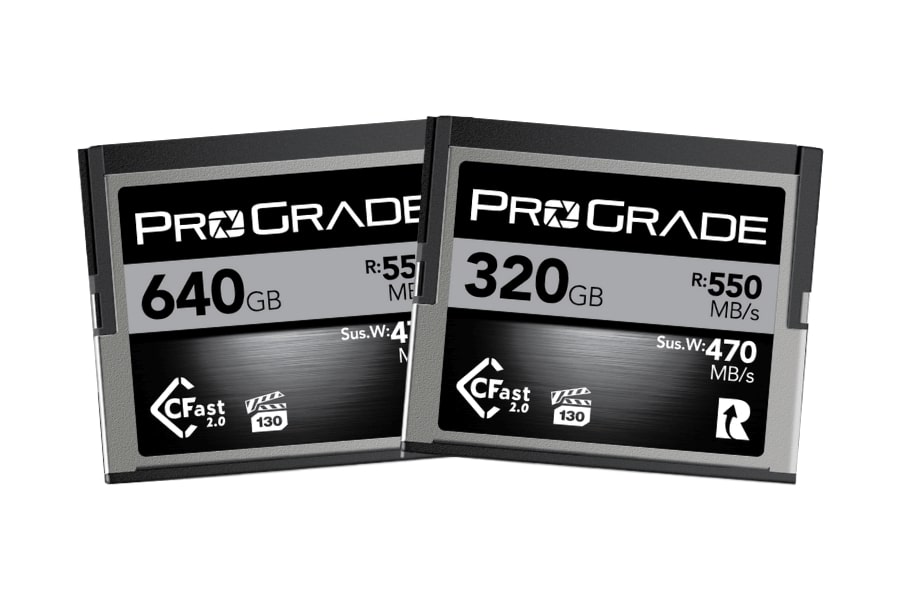
The CF card will also showcase a number like 32 GB or 64 GB, which will indicate the storage capacity of the card. Some of the CF cards can, however, go beyond 64 GB or even larger, but on average, 64 GB is considered to be a standard size. After that, the card's class will also be mentioned on the SF card, like IE: UDMA 7. However, this class of card must not be a problem for the casual buyer.
The next thing to read in the SD card is the minimum write speed, which will be mentioned in the bottom right corner. Usually, the write speed of the card will be slower than the read speed of the card. CF cards can vary significantly depending on the brands. Therefore, it is advisable that you check the maximum and minimum reading and writing speeds of the card.
How do CF Cards Work?
You must understand the difference between CF card vs CFast card in order to determine how the CF cards work. CF Cards have around 50 pin holes that are lined perfectly to ensure that the card functions properly. However, sometimes the holes will bend, which will create issues with the camera and a CompactFlash reader. If the card isn’t working properly, you will have to use a small screwdriver. Then, turn the pins back to their original position so they function efficiently.
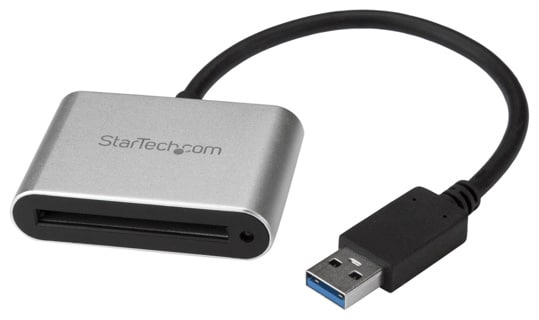
You can easily use the CF cards. However, to use a CF card, you will have to format the card. Once the CF card is formatted, you can start recording the same. The CF cards use exFAT or FAT32 formatting methods to ensure that they are compatible with Apple and Windows products.
Recover Lost or Deleted Files from a CF Card Using Wondershare Recoverit
CF cards are meant for storing a wide amount of data. However, sometimes the data can get accidentally deleted. As a result, you must try to recover the lost or deleted files. If these files are permanently deleted, you will find that you can’t recover them. Then you can opt for CFast vs CF card comparison if the files are deleted. However, the good thing is that you can recover lost and deleted files using Wondershare Recoverit.
Wondershare Recoverit is one of the most reliable data recovery tools that can help in recovering files across 100+ formats. It is compatible with Windows and Apple OS devices. Wondershare Recoverit is an exceptional tool that allows you to recover the data for free of cost. All you need to do is install Wondershare Recoverit in your system and get started with the recovery method.
You may follow the detailed steps given below to recover the lost and deleted CF card files using Wondershare Recoverit:
Step 1: As soon as Wondershare Recoverit is installed in your system, you can launch the software. Under the File Recover section, choose the SD card option and specify the location from which you are to recover the data.
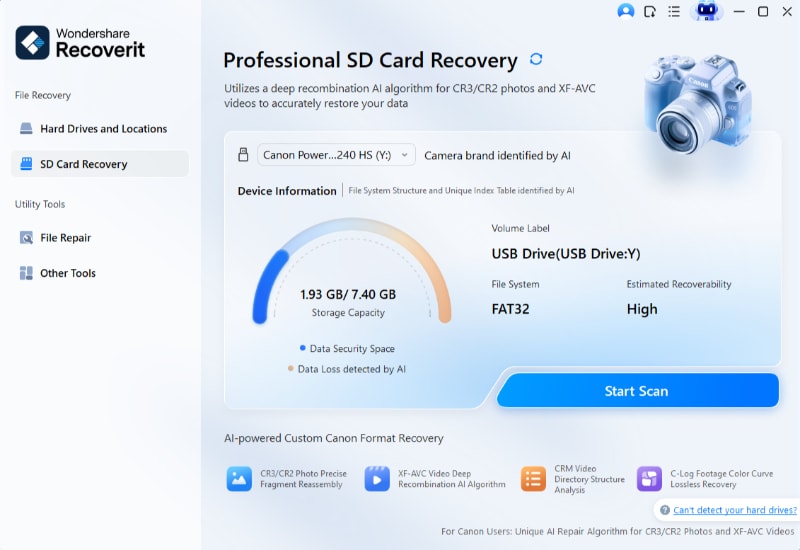
Step 2: The next step is to scan the CF card. Select the CF card to begin the scanning process. The scanning process is automatic, which is why you will not have to struggle much. However, you do have the option to pause or stop the scanning process at your convenience.
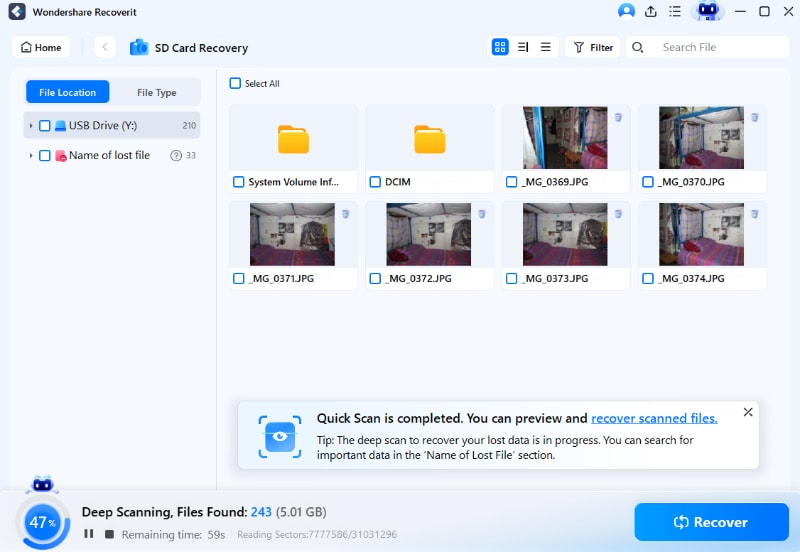
Step 3: A preview of all the deleted and lost files will be available on your software. Select the files you want to recover and get a preview of them. Now, if you feel that the files are fine, click on the Recover option to retrieve the files.

Step 4: Now, you will have to select the location in which you want to recover the lost and deleted files. Confirm the location and save the process.
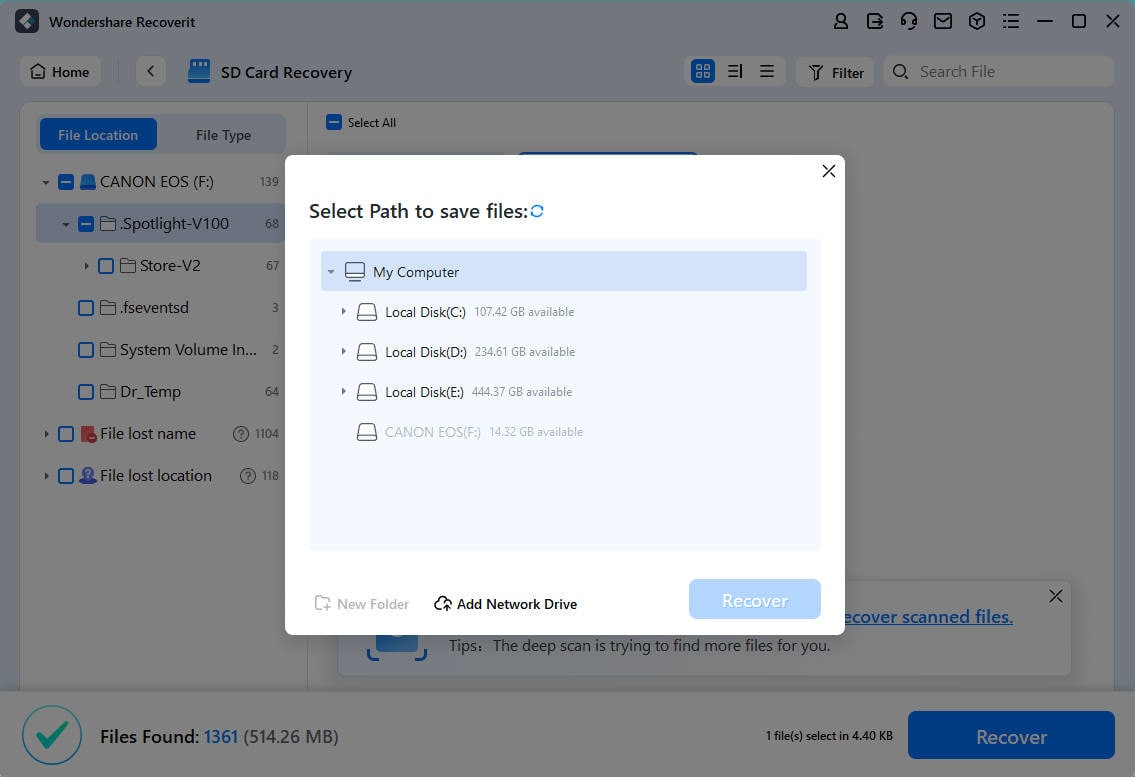
The Future of Compact Flash Cards
With each passing day, the storage capacity is increasing. Therefore, the transfer speed is becoming a problem, thereby impacting the usefulness of different device interfaces such as the standard Compact Flash cards. Currently, the fastest Compact Flash card has a data transfer speed of 167 MB per second (UDMA 7) because of the limitations as per the Parallel ATA technology.
In order to overcome these limitations, newer formats are being introduced, like CFast (600 MB per second), CFexpress (1400 MB per second), and XQD (400 MB per second). These are being introduced to cater to the needs of the high-demand digital stills and video camera market. Moreover, microSD cards and SD cards have undergone significant changes in the last two decades. Owing to the transfer limitations, SD cards, and microSD cards have become extremely popular consumer devices. Therefore, the demand for CompactFlash cards in portable devices is a major requirement.
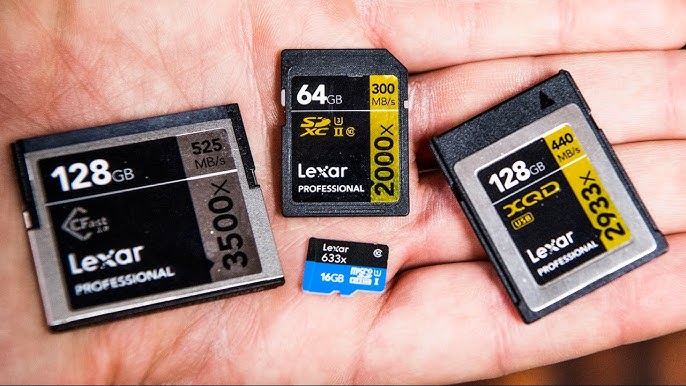
As of today, the vendors are continuing with their general manufacture and selling of the traditional PATA CompactFlash cards. Considering the use of these in the market, it can be expected that in the coming years, the situation will be the same, especially in terms of supporting older devices. However, the end of CompactFlash cards may come soon as cheaper and smaller technologies are introduced. Nonetheless, it can’t be denied that Compact Flash cards have potentially outlived other flash media formats in the last 25 years. So, in the coming years, it will still stand the test of time.
Conclusion
Memory storage cards are meant to increase the space. There’s a significant difference between CF vs CFast cards, both of which are convenient. However, when it comes to professional photography and videography, most of them prefer using CFast cards. Data deletion and corruption, however, are common risks for CFast and CF cards. But if you face these problems, you can consider choosing a data recovery software to retrieve the files.
When it comes to choosing between CFast and CF cards, you must choose one that fits all your preferences. CFast cards are, however, slightly expensive, which is why many people prefer using CF cards. So, compare all the features and benefits so that you can choose one that meets all your professional goals.
FAQs
1. What is the difference between CF and CFast cards?
CF and CFast cards differ in respect to storage and interface. As the name suggests, CFast cards are faster than CF cards. It also differs in terms of storage capacity. While CFast cards have a storage capacity of 2 GB to 1 TB, CF cards only support storage capacities up to 512 GB.2. Is CFast compatible with CF?
No, CFast cards aren’t physically compatible with CompactFlash cards. These two aren’t electronically compatible as well. Nonetheless, there are card readers that read and support both CFast and CF formats.3. What are the modes of CF cards?
CF cards support a wide range of modes, some of the most notable ones being the following: XQD: This is a removable flash memory card format across CFA. The XQD, however, uses the PCIe Gen1 interface, which will support a speed of around 250 Mbps. CFast: It will combine the traditional design of CompactFlash to initiate data transfer technology for Serial ATA (SATA). The CFast cards will eventually help determine the fast read and write speed, which is better than the CF cards.




 ChatGPT
ChatGPT
 Perplexity
Perplexity
 Google AI Mode
Google AI Mode
 Grok
Grok























